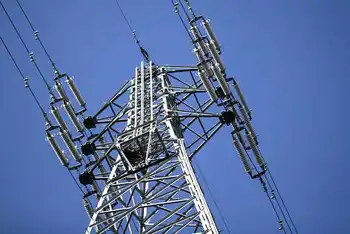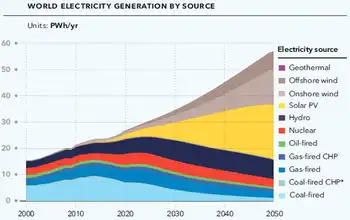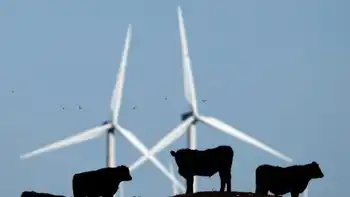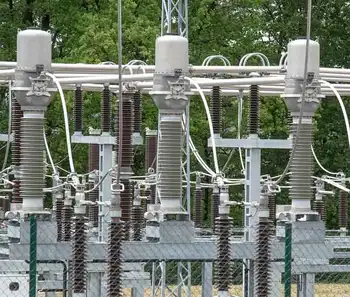ConsumerPowerline Helps New York City Avoid Summer Blackouts by Creating a Cadre of 'Virtual Micro-Power Plants'
NEW YORK, NEW YORK - ConsumerPowerline has announced that it is actively amassing capacity curtailment commitments from significant energy users in the New York metropolitan region in advance of the imminent demand response capacity auction scheduled to close on March 31.
A strategic energy asset management firm, ConsumerPowerline aggregates curtailable electrical capacity and then bids this power into the twice annual Reliability Demand Response Market. The firm pays large end-users who commit to participate. The most lucrative season of this market is the upcoming bid; it is known as the 'summer strip,' and is held by the New York Independent System Operator (NYISO). The demand response market creates an insurance policy for energy providers to be called upon in times of grid crisis. This program is used to avoid costly and disruptive potential rolling brown- or blackouts.
This year, ConsumerPowerline, the nation's largest demand response provider, with an estimated 550 megawatts of electricity capacity under management - enough power to light 550,000 homes at an annual electric spend of approximately $500 million dollars. ConsumerPowerline has paid its blue-chip client base more than $15 million over the last four years. The firm will aggregate a significant portion of its portfolio to bid into the 2006 summer demand response market. ConsumerPowerline's represented load will be more than 50 percent larger than the company's 2005 representation; the current ConsumerPowerline portfolio represents more than 4 percent of the city's entire electricity load.
This year, the company added many significant clients to its roster including Altria, The State of Massachusetts, University of Massachusetts, Amherst campus, and many others.
"ConsumerPowerline is helping to create a cadre of 'virtual micro- power plants' that underlies a substantial safety net for the power grid, helping protect the local economy and individual businesses and residents from the disruptive event of power outages," said Mike Gordon, founder and president, ConsumerPowerline. "ConsumerPowerline's corps of 'virtual power plants' are comprised of dozens of hospitals, hotels, high-profile commercial buildings, apartment complexes, and other residential, industrial and commercial properties in New York City. These consumers have partnered with us to commit to curtail their power usage, in the event of a crisis that can potentially threaten supply.
This commitment helps support the reliability of the electrical power grid in the region and, those who commit, get a bonus: they take better control over their energy expenses, turning what were cost centers into recurring revenue generators."
Twice a year, in the spring and the fall, New York City commercial, residential and industrial property owners and managers can volunteer, in advance, to curtail energy consumption during times of a potential grid crisis. On extremely hot or cold days during the year, the NYISO can call upon these buildings, with a day's notice, to scale back their energy use through methods that will not impact tenant comfort, but will allow the buildings to meet their capacity curtailment commitments. Examples of tactics employed include: pre-cooling, switching to on-site generational resources, and the shutting off of non-essential equipment, all of which combined result in significant energy savings for the gird, and revenue generation for the buildings.
"The summer strip is critical moment for all of the participants in the region's electricity marketplace. For ConsumerPowerline's clients it is an opportunity to generate millions of dollars in revenue, and prove their commitment to regional energy stewardship. For the city, the strip represents an insurance policy against the threat of summer blackouts. For ConsumerPowerline, helping our clients participate in the demand response auction is another example of the value we bring on a daily basis in supporting smart management of energy assets," Gordon added. "The NYISO auction taking place at the end of this week is the last chance for companies to realize a full 6-months of demand response revenues.
Companies that sign up afterwards will be limited to generating revenues from the monthly auctions that occur throughout the summer. Companies that are not managing their energy assets are both leaving money on the table and are not contributing to system reliability."
Among those customers that ConsumerPowerline will represent in the upcoming auction are Fortune 500 companies Morgan Stanley, Starwood Hotels and Macys Department Stores along with some of the nation's largest commercial, residential, retail and institutional property owners and managers.
The energy auctions run by the NYISO, including the Emergency Demand Response Program (EDRP) and ICAP Special Case Resources (ICAP-SCR) program, are intended to provide system operators with additional resources that can be deployed in the event of energy shortages to maintain the reliability of the system.
Related News

Toronto Prepares for a Surge in Electricity Demand as City Continues to Grow
TORONTO - Toronto faces a significant challenge in meeting the growing electricity needs of its expanding population and ambitious development plans. According to a new report from Ontario's Independent Electricity System Operator (IESO), Toronto's peak electricity demand is expected to nearly double by 2050. This highlights the need for proactive steps to secure adequate electricity supply amidst the city's ongoing economic and population growth.
Key Factors Driving Demand
Several factors are contributing to the projected increase in electricity demand:
Population Growth: Toronto is one of the fastest-growing cities in North America, and this trend is expected to continue.…




